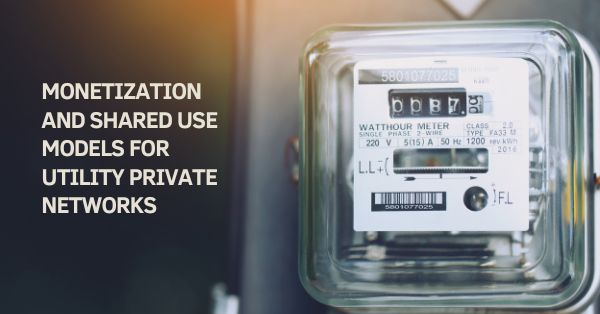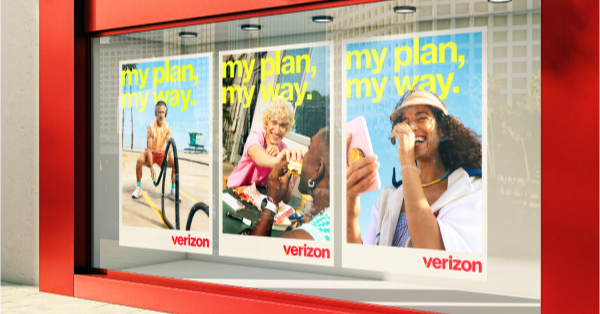Private networks have long been viewed as essential enablers of grid modernization, cybersecurity, and operational efficiency. But a growing number of utilities are now exploring how these networks can also become platforms for monetization and shared value creation. Rather than acting solely as cost centers, private LTE and 5G networks—once deployed—can support new revenue streams, enable cross-sector partnerships, and generate ROI by providing services beyond core utility operations.
In this ninth installment of the Connected Utilities series, we explore how utilities are capitalizing on their private network investments through monetization models, shared use strategies, and edge services that benefit both internal operations and external stakeholders.
Utilities Monetizing Private Networks with Fixed Wireless Access
Many utilities serve rural and remote regions that lack reliable broadband coverage. With private LTE or 5G networks in place, utilities can offer Fixed Wireless Access (FWA) as a commercial or subsidized service. This provides households, farms, and small businesses with affordable internet access, bridging the digital divide while leveraging unused network capacity.
In some cases, utilities partner with local governments or school districts to prioritize underserved populations. By adding FWA endpoints to their private networks—often via existing poles, towers, or substations—utilities can deliver last-mile connectivity with minimal new infrastructure.
Utilities can also leverage existing fiber assets and electrical infrastructure to quickly deploy broadband to areas previously left behind by commercial ISPs. By doing so, they not only expand digital inclusion but also strengthen customer goodwill and regulatory positioning. This approach is especially effective when tied to federal or state grant programs targeting digital equity, where utilities can offset capital expenditures while contributing to long-term economic development.
Shared Use and Neutral Host Models for Utility Networks
Utilities with large industrial campuses, substations, or depots may allow other enterprises to connect securely through their private networks. A neutral host model enables multiple tenants to share the same physical infrastructure while maintaining logical separation through network slicing or virtual private instances.
Use cases include:
- Providing connectivity for third-party maintenance contractors
- Enabling energy customers (e.g., factories, campuses) to run IoT systems over a dedicated slice
- Hosting community events or emergency operations with local backhaul access
These models not only help offset network costs but also improve the stickiness of utility relationships with industrial and commercial customers.
In regions prone to natural disasters or major events, a neutral host model can support resilient communications for community responders and NGOs, while utilities maintain core operational control. Furthermore, offering secure network access to strategic partners—such as DER aggregators or microgrid operators—can foster integrated energy ecosystems that align with sustainability and grid optimization goals.
Mobile Wholesale and Public Partnerships for New Utility Revenue
Some utilities are exploring wholesale mobile services for other sectors. Examples include:
- Providing dedicated connectivity for public safety (fire, police, EMS) during events or disasters
- Offering bandwidth to public transit systems for passenger Wi-Fi or operational needs
- Supporting municipal applications like smart parking or environmental sensing via utility RAN infrastructure
By building MVNO-style partnerships with local agencies, utilities can repurpose excess spectrum or network availability to generate recurring revenue while maintaining full control over core network governance.
In addition, such arrangements strengthen utility-community relationships and align with broader ESG objectives. When utilities provide secure, high-availability services for public functions, they demonstrate technology leadership and support for digital public infrastructure—two aspects increasingly valued by regulators, investors, and civic stakeholders alike.
Edge Services and Local Marketplaces: New Utility Business Models
Private networks also create opportunities for utilities to offer edge-based services. Examples include:
- Hosting AI analytics platforms at substations or microgrids
- Offering secure, low-latency compute resources to third-party industrial customers
- Enabling hyperlocal marketplaces for DERs, peer-to-peer energy trading, or grid services
These new monetization paths are especially relevant as utilities build out Multi-access Edge Computing (MEC) capabilities. An edge-enabled network allows value-added services to be deployed close to where data is generated and consumed, improving efficiency, responsiveness, and privacy.
Localized energy marketplaces, in particular, hold promise for monetization. By enabling prosumers and community energy groups to trade excess solar or battery capacity within microgrids, utilities can position themselves as neutral facilitators of a dynamic energy economy, while earning fees for transaction validation, data services, or grid balancing.
Regulatory and Business Steps for Network Monetization
To monetize their private networks, utilities must navigate regulatory frameworks, cost allocation models, and service-level requirements. Key considerations include:
- Ensuring services fall within allowed utility business models or creating unregulated subsidiaries
- Managing risk and liability when offering third-party access
- Structuring SLAs and QoS guarantees for external tenants
Utilities also need to assess internal readiness—both from a legal and technical standpoint—to support billing, customer care, and compliance auditing for new services. Cross-functional collaboration between IT, legal, regulatory, and business development teams becomes crucial in shaping viable offerings.
Table: Monetization Opportunities for Utility Private Networks
| Monetization Model | Example Use Cases | Value Proposition |
|---|---|---|
| Fixed Wireless Access | Rural broadband, educational access | Community value, new revenue |
| Neutral Host / Shared RAN | Industrial campuses, events, third-party IoT | Cost-sharing, infrastructure optimization |
| Mobile Wholesale | Public safety MVNO, transit systems, and smart city apps | Cross-sector partnerships, incremental income |
| Edge Services | AI analytics, microgrid orchestration, real-time alerts | Premium services, operational efficiency |
| Localized Marketplaces | Peer-to-peer energy trading, DER balancing | Grid flexibility, new business models |
Private Networks as Revenue Platforms for Utilities
Monetization is no longer just a speculative benefit—it’s becoming a practical outcome of well-designed private networks in the utility sector. By extending network capabilities to external partners, public agencies, and underserved customers, utilities can extract more value from their infrastructure while advancing their mission of public service and grid resilience.
As we move into the next stage of the Connected Utilities series, we’ll explore cybersecurity and zero-trust architectures as foundational enablers of secure, scalable utility private networks, especially as these networks evolve into multi-tenant and service-rich environments.
Explore More from the Connected Utilities Series
Continue your learning journey with our full Connected Utilities blog series:
- Why Utilities Are Investing in Private Networks to Power the Digital Grid
- Strategic Use Cases for Private Networks in the Utility Sector
- Trends Accelerating Private Network Adoption in the Utility Sector
- Deployment Architectures and Spectrum Strategies for Utility Private Networks
- Edge Computing and AI for Predictive Utility Operations
- Governance and Lifecycle Management of Utility Private Networks
- Partner Ecosystems for Scaling Utility Private Networks
- Sustainability and ESG Drivers for Private Networks
- Monetization and Shared Use Models for Utility Private Networks
- Cybersecurity and Zero Trust for Utility Private Networks
- Future Roadmap – 5G Advanced and the AI-Driven Grid
Strengthen Your Utility Private Network Strategy
Assess your grid’s 5G readiness with our industry-specific tool, uncover gaps, and get clear, executive-ready insights to plan and deploy with confidence. Check Readiness & Premium Plans








































